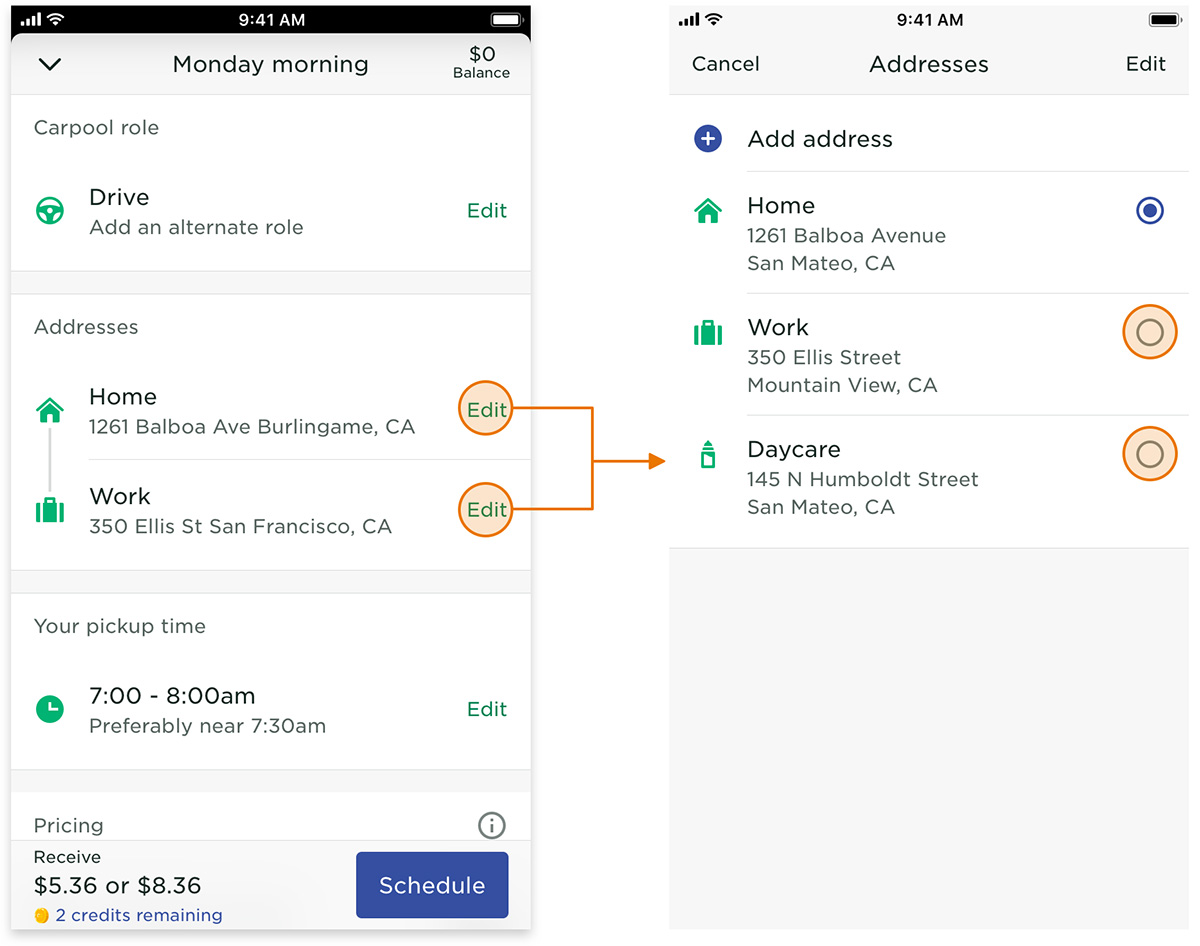

Finance
What Is A Firm’s Target Capital Structure?
Modified: December 30, 2023
Learn about a firm's target capital structure and its importance in finance. Understanding the right balance of debt and equity is crucial for business success.
(Many of the links in this article redirect to a specific reviewed product. Your purchase of these products through affiliate links helps to generate commission for LiveWell, at no extra cost. Learn more)
Table of Contents
- Introduction
- Definition of Target Capital Structure
- Importance of Target Capital Structure for a Firm
- Factors Influencing Target Capital Structure
- Methods to Determine a Firm’s Target Capital Structure
- Challenges and Limitations of Determining Target Capital Structure
- Implications of Deviating from the Target Capital Structure
- Case Studies: Examples of Firm’s Target Capital Structures
- Conclusion
Introduction
When it comes to managing a firm’s finances, one crucial aspect that needs careful consideration is the target capital structure. The target capital structure refers to the ideal mix of debt and equity financing that a company aims to maintain in order to optimize its financial position.
Having a clear understanding of the target capital structure is essential for any firm as it directly impacts its cost of capital, financial flexibility, risk profile, and overall value. By determining the optimal balance between debt and equity, a company can effectively manage its capital requirements, fund expansion plans, and maximize shareholder wealth.
While the target capital structure may vary depending on the industry, size, and growth stage of the firm, it serves as a guiding principle in making financing decisions. Straying too far from the target capital structure can have significant implications, including increased borrowing costs, dilution of ownership, and even financial distress.
In this article, we will delve deeper into the concept of a firm’s target capital structure, exploring its definition, importance, factors influencing it, methods to determine it, challenges in its implementation, and the implications of deviating from it. Additionally, we will provide real-life case studies to illustrate how different companies approach and maintain their target capital structures.
Understanding and actively managing the target capital structure can help firms make informed financial decisions and achieve long-term sustainability and growth. So, let’s dive into the world of target capital structure and discover its significance in corporate finance.
Definition of Target Capital Structure
The target capital structure of a firm refers to the desired combination of debt and equity financing that the company aims to maintain over the long term. It represents the ideal proportions or weightage of debt and equity in the firm’s capital stack.
Debt financing involves raising funds by borrowing money from external sources such as banks, financial institutions, or issuing bonds. Equity financing, on the other hand, involves raising funds by selling ownership stakes in the company to investors, which can be in the form of common stock, preferred stock, or retained earnings.
The proportions of debt and equity in the target capital structure can vary depending on numerous factors, including industry dynamics, business risk, growth prospects, and financial policies. The firm’s objective is to strike a balance between the benefits and costs associated with each source of financing.
By utilizing debt financing, a firm can benefit from the interest tax shield, as interest payments are tax-deductible. Debt also allows for leverage, meaning that the firm can amplify its returns on equity. However, excessive debt increases the financial risk and can lead to higher interest expenses, which may limit future growth opportunities.
Equity financing, on the other hand, provides a cushion of safety for the firm’s creditors as equity holders typically bear the residual risk. It also offers flexibility as dividends can be adjusted based on the company’s performance. However, issuing additional equity can lead to dilution of ownership and may be costlier in terms of the required return on investment.
Therefore, the target capital structure represents the optimal trade-off between the benefits and costs of debt and equity financing, striking a balance between risk-sharing, tax advantages, flexibility, and cost of capital.
It is important to note that the target capital structure is not a fixed ratio that remains constant throughout the life of the firm. Instead, it serves as a benchmark for financial decision-making and can be adjusted as per the changing business environment and capital market conditions.
Importance of Target Capital Structure for a Firm
The target capital structure holds great significance for a firm as it directly impacts its financial position, cost of capital, risk profile, and overall value. Let’s explore the key reasons why determining and maintaining an optimal target capital structure is crucial for a company:
- Cost of Capital: The target capital structure plays a vital role in determining a firm’s cost of capital, which is the required return on investment for its investors. A well-balanced capital structure can help minimize the cost of capital by optimizing the proportions of debt and equity. This, in turn, reduces the firm’s overall financing costs and enhances its profitability.
- Financial Flexibility: By having a target capital structure in place, a firm can enhance its financial flexibility. This allows the company to adapt to changing market conditions, capitalize on growth opportunities, and effectively manage its capital requirements. Financial flexibility is important for firms to stay competitive and navigate through economic uncertainties.
- Risk Management: The target capital structure is instrumental in managing the risk profile of a company. Striking the right balance between debt and equity helps in mitigating financial risk. Excessive debt can increase the firm’s vulnerability to economic downturns or changes in interest rates, while too much equity can dilute ownership and reduce shareholder returns. A well-defined target capital structure ensures an appropriate risk-return trade-off for the firm.
- Shareholder Value: Maintaining an optimal target capital structure is crucial for maximizing shareholder value. By efficiently utilizing debt and equity financing, a firm can enhance its profitability, achieve higher returns on investment, and increase shareholder wealth. Investors value companies that manage their capital structures prudently, as it demonstrates effective financial management and the ability to generate sustainable long-term growth.
- Access to Capital: A firm with a well-defined target capital structure is more likely to have better access to capital markets. Lenders and investors are more inclined to trust companies that have a balanced capital structure as it signals financial stability and responsible use of funds. This, in turn, increases the firm’s ability to raise capital at favorable terms, support expansion plans, and seize strategic opportunities.
In summary, the target capital structure serves as a guiding principle for firms in managing their finances effectively. By optimizing the mix of debt and equity financing, companies can reduce their cost of capital, enhance financial flexibility, manage risk, maximize shareholder value, and ensure access to funding. Striving to maintain the target capital structure enables firms to navigate the dynamic business landscape and position themselves for long-term success.
Factors Influencing Target Capital Structure
The target capital structure of a firm is influenced by a variety of factors, both internal and external. These factors shape the decision-making process in determining the optimal mix of debt and equity financing. Let’s explore some key factors that play a role in influencing the target capital structure:
- Business Risk: The level of business risk associated with the firm’s operations is a significant factor in determining the target capital structure. Industries with higher risk levels, such as technology or biotechnology, may prefer to have a lower debt ratio to reduce financial risk. Conversely, industries with stable and predictable cash flows, such as utilities or consumer staples, may comfortably maintain higher debt levels.
- Growth Prospects: The growth opportunities available to a firm can impact its target capital structure. Companies with high growth prospects may rely more on equity financing to fund their expansion plans, as it provides flexibility, without the burden of fixed interest payments. On the other hand, mature and stable companies with limited growth opportunities may lean towards debt financing to take advantage of the tax benefits and minimize dilution of ownership.
- Company Size: The size of a firm can also influence its target capital structure. Smaller companies may face challenges in accessing debt markets or may have limited collateral for securing loans. Hence, they might rely more on equity financing. Larger and more established companies, on the other hand, may have easier access to debt financing due to their stronger financial position and greater borrowing capacity.
- Business Cycle: The stage of the business cycle can impact a firm’s target capital structure. During economic expansions, when interest rates are lower and business conditions are favorable, companies may be more inclined to take on additional debt to capitalize on growth opportunities. Conversely, during economic downturns, when credit conditions tighten and uncertainty increases, companies may reduce their debt levels and focus on preserving financial stability.
- Tax Considerations: Tax considerations also play a role in shaping the target capital structure. Debt financing offers the advantage of tax deductibility on interest payments, which can lower a firm’s overall tax burden. Companies operating in jurisdictions with higher corporate tax rates may be motivated to have a higher proportion of debt in their capital structure to maximize the tax shield benefits.
- Market Conditions: External market conditions, including the state of the capital markets, interest rate environment, and investor preferences, can influence a firm’s target capital structure. If debt financing is readily available and at favorable terms, companies may choose to increase their debt ratios. Similarly, if equity markets are booming, companies may opt for equity financing to take advantage of high valuations and investor demand.
It is important to note that these factors vary across industries and companies. Each firm must carefully assess these factors, along with its specific financial objectives and risk tolerance, to determine the most appropriate target capital structure.
Methods to Determine a Firm’s Target Capital Structure
Determining the optimal target capital structure for a firm requires careful analysis and consideration of various financial factors. Although there is no one-size-fits-all approach, companies typically employ several methods to determine their target capital structure. Let’s explore some commonly used methods:
- Debt Capacity Analysis: A debt capacity analysis involves evaluating the maximum amount of debt a firm can reasonably assume without jeopardizing its financial health. By considering factors such as cash flow, assets, existing debt obligations, and creditworthiness, a firm can assess its capacity to take on debt. This analysis helps establish the upper limit for the debt component in the target capital structure.
- Weighted Average Cost of Capital (WACC): The WACC is a commonly used method to determine the target capital structure of a firm. It calculates the average cost of borrowing for the company by considering the proportion of debt and equity in the capital structure. By minimizing the WACC, a firm can optimize its financing mix and maximize its value. The target capital structure is often set at the point where WACC is at its lowest.
- Peers and Industry Analysis: Comparing a firm’s capital structure with its industry peers can provide valuable insights into the target capital structure. Analyzing the capital structures of similar companies allows for benchmarking and identifying trends or industry norms. However, it is essential to consider the specific circumstances and financial objectives of the firm, as there may be valid reasons for deviating from the industry average.
- Market Value-based Approach: Determining the target capital structure based on market values involves considering the market prices of a firm’s debt and equity. By assessing the market valuations, investors’ expectations, and the required return on investment, a firm can gauge the optimal mix of debt and equity that aligns with market perceptions and expectations.
- Risk-Return Analysis: Conducting a risk-return analysis helps in determining the target capital structure by assessing the trade-off between risk and return. By analyzing the expected profitability, business risk, and financial risk, a firm can strike a balance between maximizing returns for shareholders while minimizing the risks associated with excessive debt or dilution of ownership.
It is important to note that determining the target capital structure is not a one-time exercise. Companies should regularly reassess their capital structure based on changes in their business environment, market conditions, and financial goals. Flexibility is key to adapting the target capital structure as the firm’s circumstances evolve.
Ultimately, the decision on the target capital structure should reflect the firm’s financial objectives, risk appetite, competitive position, and growth plans. By using a combination of these methods and considering various financial factors, firms can arrive at a well-informed and robust target capital structure to guide their financing decisions.
Challenges and Limitations of Determining Target Capital Structure
Determining the target capital structure for a firm is a complex task that involves various challenges and limitations. While it is crucial for firms to establish an optimal capital mix, it is important to recognize the inherent difficulties in accurately determining the target capital structure. Let’s explore some of the key challenges and limitations:
- Uncertainty and Volatility: The dynamic nature of the business environment introduces uncertainty and volatility, making it challenging to determine a single ideal target capital structure. Market conditions, interest rates, and economic factors can fluctuate over time, impacting the feasibility and cost of various financing options.
- Availability and Cost of Capital: The availability and cost of different sources of capital can vary depending on a firm’s size, industry, credit rating, and prevailing market conditions. Changes in credit markets, investor sentiments, or regulatory frameworks can affect the feasibility and costs associated with debt or equity financing.
- Company-specific Factors: Each firm has unique characteristics, such as its risk appetite, growth prospects, cash flow patterns, and existing financial obligations. These factors can influence the appropriate target capital structure. Therefore, relying solely on industry benchmarks or peers may not fully capture the specific needs and circumstances of the firm.
- Flexibility and Adaptability: Even with a well-defined target capital structure, firms may need to adapt and make adjustments as their business evolves. Changes in business strategies, expansion plans, or unforeseen circumstances may necessitate revisions to the target capital structure. Maintaining flexibility is crucial to respond effectively to changing market conditions and financial requirements.
- Strategic Considerations: Determining the target capital structure involves trade-offs between different strategic objectives. For example, a firm may prioritize growth and opt for higher debt levels to fund expansion plans but increase financial risk. Balancing strategic priorities with financial considerations can be challenging and requires careful analysis and decision-making.
- Market Perception and Investor Expectations: The market perception of a firm’s capital structure and investor expectations can impact its funding options and cost of capital. Deviating significantly from market norms or investor preferences may result in higher borrowing costs or limited access to capital. Firms need to strike a balance between leveraging market opportunities and managing external perceptions.
While these challenges and limitations exist, firms can mitigate their impact by conducting thorough analysis, engaging with financial advisors, and continuously monitoring and adjusting their target capital structure. Regular evaluation and reassessment are critical to align the capital structure with the evolving business environment and the firm’s financial goals.
It is also important to recognize that the target capital structure is not a static framework and may require periodic adjustments as the firm’s circumstances change. By remaining adaptable and proactive, firms can navigate these challenges and optimize their capital structures to support their long-term success and value creation.
Implications of Deviating from the Target Capital Structure
Deviation from a firm’s target capital structure can have significant implications on its financial health, cost of capital, risk profile, and overall value. Let’s explore some of the key implications that arise when a company strays from its target capital structure:
- Increased Cost of Capital: Deviating from the target capital structure can lead to higher borrowing costs. If a firm’s debt ratio is higher than its target, lenders may perceive increased financial risk, requiring a higher interest rate to compensate for the added risk. Similarly, if the equity component is higher, it may result in dilution of ownership and increased expectations from equity investors, leading to a higher required return on investment.
- Financial Distress: Excessive deviation from the target capital structure, especially towards high debt levels, can increase the risk of financial distress. In case of economic downturns, market shocks, or unexpected events, heavily indebted firms may struggle to meet their debt obligations, potentially leading to default or bankruptcy. Lower financial flexibility and limited access to credit may further exacerbate the financial challenges.
- Dilution of Ownership: Deviating from the target capital structure towards equity financing can lead to dilution of ownership. This occurs when new shares are issued, reducing the proportion of ownership held by existing shareholders. Dilution affects the voting power, control, and share of profits for existing shareholders. Significant and frequent dilution can erode investor confidence and undermine the firm’s valuation.
- Reduced Financial Flexibility: A significant deviation from the target capital structure can limit a firm’s financial flexibility. Too much debt can result in high interest payments, which may strain cash flow and impede the firm’s ability to invest in growth opportunities or adjust to market changes. Insufficient debt and excess equity can limit the firm’s ability to access additional capital when needed.
- Impact on Credit Ratings: Deviation from the target capital structure can impact a firm’s credit ratings. Credit rating agencies assess a company’s financial health, including its capital structure, to determine its creditworthiness. A negative deviation, such as higher debt-to-equity ratio, may lead to a downgrade in credit ratings. This can increase borrowing costs, limit access to credit, and negatively affect the firm’s reputation.
- Funding Constraints: Deviating significantly from the target capital structure can result in funding constraints. For example, if a firm relies heavily on debt financing and credit markets tighten, it may face difficulties in refinancing or raising additional debt. On the other hand, if equity financing is relied upon heavily, there may be limitations on the availability of investors willing to purchase additional shares.
Overall, deviating from the target capital structure can introduce financial risks, reduce financial flexibility, increase borrowing costs, and limit a firm’s ability to respond to market conditions. Straying too far from the optimal capital mix can hinder growth prospects, erode shareholder value, and put the firm’s long-term viability at risk.
Therefore, it is crucial for firms to actively monitor and manage their capital structure, ensuring it remains aligned with their financial goals, risk tolerance, and market conditions. Regular reassessment and adjustments can help mitigate the implications of deviation and maintain a strong financial position.
Case Studies: Examples of Firm’s Target Capital Structures
Examining real-life examples can provide valuable insights into how different firms approach and maintain their target capital structures. Here are two case studies highlighting the target capital structures of well-known companies:
-
Case Study 1: Company A
Company A, a technology startup in the software industry, has a target capital structure that leans towards equity financing. As a high-growth company, it places a strong emphasis on funding its expansion plans and product development through equity investments. The firm believes that equity financing provides the necessary financial flexibility to fuel its growth, support innovation, and attract top talent.
While debt financing is not entirely disregarded, Company A maintains a relatively low debt-to-equity ratio to limit financial risk, especially in the early stages of its growth. By relying more on equity financing, the company can preserve cash flow and avoid the burden of fixed interest payments. This strategy allows Company A to focus on long-term value creation and market penetration, aligning with its business model and growth objectives.
By maintaining a target capital structure that prioritizes equity financing, Company A aims to leverage its high-growth potential while managing financial risk and retaining flexibility. This approach has helped the company attract venture capital investments and support its rapid expansion in the competitive technology industry.
-
Case Study 2: Company B
Company B is a well-established manufacturing firm in the automotive industry. As a mature company with stable cash flows and a focus on long-term sustainability, Company B maintains a target capital structure that includes a significant proportion of debt financing.
Company B features a higher debt-to-equity ratio to take advantage of the tax benefits associated with debt financing and to leverage its stable operations. The firm uses debt financing to fund capital expenditures, research and development efforts, and acquisitions. By utilizing debt, Company B can preserve its cash flow and enhance profitability while minimizing the dilution of ownership and shareholder returns.
However, Company B still considers maintaining a balanced capital structure and avoids excessive debt levels to manage financial risk and maintain its creditworthiness. The firm conducts a thorough analysis of its borrowing capacity, interest coverage ratios, and market conditions to ensure that the target capital structure aligns with its financial objectives and risk tolerance.
By maintaining a target capital structure with an optimal mix of debt and equity financing, Company B has been able to sustain its growth, fund strategic initiatives, and generate consistent returns for its shareholders. The firm’s capital structure reflects its industry dynamics, growth stage, and long-term focus on value creation.
These case studies illustrate how firms in different industries and growth stages can have distinct target capital structures. Each company evaluates its financial objectives, risk appetite, and market conditions to determine the optimal capital mix that maximizes shareholder value and supports its strategic goals.
Conclusion
The target capital structure is a crucial aspect of financial management for any firm. It represents the desired mix of debt and equity financing that a company aims to maintain in order to optimize its financial position, cost of capital, risk profile, and overall value. Determining and maintaining the optimal target capital structure requires careful analysis and consideration of various factors, such as industry dynamics, growth prospects, company size, and market conditions.
While there are challenges and limitations in determining the target capital structure, firms can employ various methods to evaluate their debt capacity, analyze risk-return trade-offs, benchmark against industry peers, and consider market valuations. Regular monitoring and adjustments to the target capital structure are necessary to adapt to changing business environments and ensure alignment with financial goals.
Deviation from the target capital structure can lead to significant implications, including increased borrowing costs, financial distress, dilution of ownership, reduced financial flexibility, and funding constraints. It is crucial for firms to actively manage their capital structures, maintaining a balanced approach to mitigate risks and maximize shareholder value.
Through case studies, we have seen how different firms approach their target capital structures based on their specific characteristics and goals. From technology startups prioritizing equity financing for growth to established manufacturing companies emphasizing debt financing for stability, each firm’s capital structure reflects its unique circumstances.
In conclusion, determining and maintaining the optimal target capital structure is a critical aspect of financial management for firms. By carefully evaluating financial factors and strategic objectives, companies can strike a balance between debt and equity financing that aligns with their growth plans, risk tolerance, and market conditions. A well-managed target capital structure enables firms to optimize their financing, enhance financial flexibility, manage risk, and drive long-term value creation.














